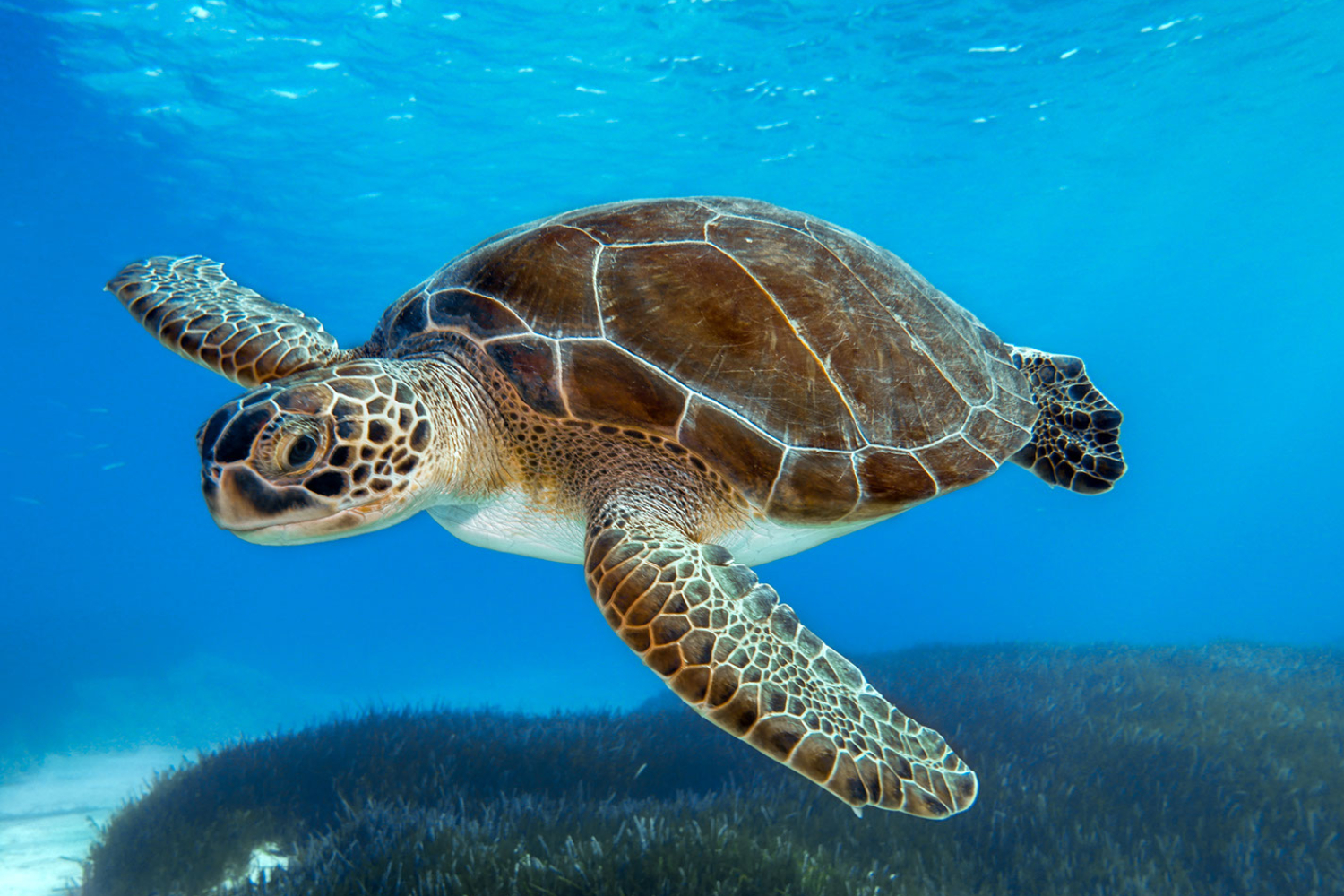
Sea turtles are fascinating creatures that have captured the imagination of people across the world. These gentle giants of the ocean are not only iconic but also play a crucial role in maintaining the health of marine ecosystems. With their unique features and remarkable life cycle, sea turtles have become a subject of great interest and study for researchers and nature enthusiasts alike.
In this article, we will explore 19 interesting facts about sea turtles. From their incredible journey from hatchlings to adulthood, to their endangered status and conservation efforts, we will delve into the world of these majestic marine reptiles. So, let’s dive deep into the fascinating world of sea turtles and discover some captivating facts about these magnificent creatures.
Key Takeaways:
- Sea turtles are ancient, adaptable, and vital to marine ecosystems. They face threats from human activities and have a vulnerable life cycle, making conservation efforts crucial for their survival.
- Sea turtles have unique nesting habits, long migrations, and play a vital role in maintaining the health of seagrass beds and coral reefs. They are protected by international laws and regulations to ensure their survival.
Sea turtles are ancient creatures
Sea turtles have been around for millions of years, with fossil evidence dating back to the time of the dinosaurs. They are truly living fossils.
There are seven different species of sea turtles
The seven species of sea turtles are the loggerhead, green, hawksbill, leatherback, olive ridley, Kemp’s ridley, and flatback. Each species has its own unique characteristics and habitats.
Sea turtles can be found in oceans around the world
Sea turtles have a global distribution and can be found in the Atlantic, Pacific, and Indian Oceans, as well as the Mediterranean Sea. They are highly adaptable creatures.
Sea turtles have unique nesting habits
Female sea turtles return to the same beaches where they were hatched to lay their eggs. This nesting behavior is known as natal homing and helps maintain genetic diversity within populations.
Sea turtles are strong swimmers
Sea turtles have powerful flippers that allow them to navigate through the water with ease. They can swim at speeds of up to 20 miles per hour.
Sea turtles are air-breathing reptiles
Despite spending most of their lives in the water, sea turtles need to come up to the surface to breathe. They have lungs just like any other reptile.
Sea turtles are herbivores, carnivores, or omnivores
Depending on the species, sea turtles have different dietary preferences. Some species, like the green sea turtle, are herbivorous and primarily feed on seagrasses and algae. Others, like the loggerhead sea turtle, are carnivorous and feed on jellyfish and crustaceans.
Female sea turtles return to land only to nest
Female sea turtles spend their entire lives at sea, only returning to land to lay their eggs. Once the eggs are laid, they cover them with sand and return to the ocean, leaving the eggs to hatch on their own.
Sea turtles have a long lifespan
Sea turtles can live for several decades. Some species, like the green sea turtle, can live up to 80 years or more.
Sea turtles are threatened by human activities
Sea turtles face numerous threats from human activities, including habitat destruction, pollution, climate change, and entanglement in fishing nets. Conservation efforts are crucial in protecting these magnificent creatures.
Sea turtles play a vital role in marine ecosystems
Sea turtles help maintain the health of seagrass beds and coral reefs by grazing on seagrasses and controlling sponge populations. They also serve as prey for other marine organisms.
Sea turtles have a unique way of navigating
Sea turtles use the Earth’s magnetic field and cues from the stars and sun to navigate during their long migrations across the oceans.
Sea turtles can travel long distances
Some sea turtles undertake incredible long-distance migrations, traveling thousands of miles between their feeding and nesting grounds. The leatherback turtle holds the record for the longest recorded migration of any marine animal.
Sea turtles have a vulnerable life cycle
Sea turtles face high mortality rates at every stage of their life cycle, from eggs being preyed upon by predators to hatchlings facing numerous dangers on their journey to the ocean. Only a small percentage of hatchlings reach adulthood.
Sea turtles can communicate through vibrations and visual signals
Sea turtles communicate with each other through vibrations and visual signals, such as flapping their flippers and opening their mouths wide. These behaviors serve both social and territorial purposes.
Sea turtles have protective shells
Their shells, known as carapaces, provide sea turtles with protection against predators. The shells are made up of bony plates called scutes, which overlay each other.
Sea turtles have few natural predators
Adult sea turtles have few natural predators, thanks to their large size and protective shells. However, hatchlings are vulnerable to predation by birds, crabs, and other marine animals.
Sea turtles go through a process called “frenzy” when they hatch
When sea turtle hatchlings emerge from their nests, they go through a frenzy where they dig their way to the surface and make a dash towards the ocean, evading predators along the way.
Sea turtles are protected by international laws and regulations
Sea turtles are protected by various international agreements, such as the Convention on International Trade in Endangered Species of Wild Fauna and Flora (CITES), and by regional conservation programs implemented by countries worldwide.
Conclusion
In conclusion, sea turtles are fascinating creatures that play a crucial role in marine ecosystems. From their unique nesting habits to their remarkable navigational abilities, there is much to admire about these ancient reptiles. Despite facing numerous threats, there are ongoing efforts to conserve and protect sea turtle populations worldwide.By understanding and appreciating the fascinating facts about sea turtles, we can raise awareness about their conservation needs and contribute to their preservation. Whether through supporting marine protected areas, reducing plastic pollution, or participating in educational programs, each of us has the power to make a difference in the lives of these incredible creatures.So let us embrace our role as stewards of the ocean and work together to ensure a brighter future for sea turtles and the ecosystems they inhabit.
FAQs
1. How many species of sea turtles are there?
There are seven recognized species of sea turtles: loggerhead, green, hawksbill, Kemp’s ridley, olive ridley, flatback, and leatherback.
2. How long do sea turtles live?
Sea turtles can live for several decades. Some species can live up to 80 years or more.
3. Where do sea turtles lay their eggs?
Most sea turtles return to the same beaches where they were born to lay their eggs. This behavior is known as natal homing.
4. How many eggs do sea turtles lay in a nest?
The number of eggs in a sea turtle nest can vary, but it typically ranges from 80 to 120 eggs.
5. Are sea turtles endangered?
Yes, all species of sea turtles are classified as either endangered or threatened due to various factors such as habitat loss, climate change, and bycatch.
6. How long do sea turtle hatchlings stay on land?
Once the sea turtle hatchlings emerge from their eggs, they immediately make their way to the ocean. This process can take a few minutes to a couple of hours.
7. What do sea turtles eat?
The diet of sea turtles varies depending on the species. Some feed on plants, while others are carnivorous, consuming jellyfish, shrimp, and other small marine creatures.
8. How do sea turtles navigate?
Sea turtles have a remarkable ability to navigate using Earth’s magnetic fields. They rely on a sense called magnetoreception to guide them during their long migrations.
9. Do sea turtles have predators?
Yes, sea turtles have natural predators such as sharks and large fish. Additionally, their eggs and hatchlings are vulnerable to predation by birds, crabs, and other animals.
10. How can I help protect sea turtles?
You can help protect sea turtles by supporting conservation organizations, reducing plastic use, participating in beach cleanups, and spreading awareness about the importance of their conservation.
Hungry for more captivating sea turtle facts? Explore our comprehensive guides that delve deeper into the lives of these incredible creatures. From little-known details about their behavior to surprising insights into their adaptations, our articles offer a wealth of knowledge. If you're curious about other fascinating marine life, don't miss our piece on the most astonishing ocean animals. Expand your understanding of the underwater world and gain a newfound appreciation for its diverse inhabitants.
Was this page helpful?
Our commitment to delivering trustworthy and engaging content is at the heart of what we do. Each fact on our site is contributed by real users like you, bringing a wealth of diverse insights and information. To ensure the highest standards of accuracy and reliability, our dedicated editors meticulously review each submission. This process guarantees that the facts we share are not only fascinating but also credible. Trust in our commitment to quality and authenticity as you explore and learn with us.


